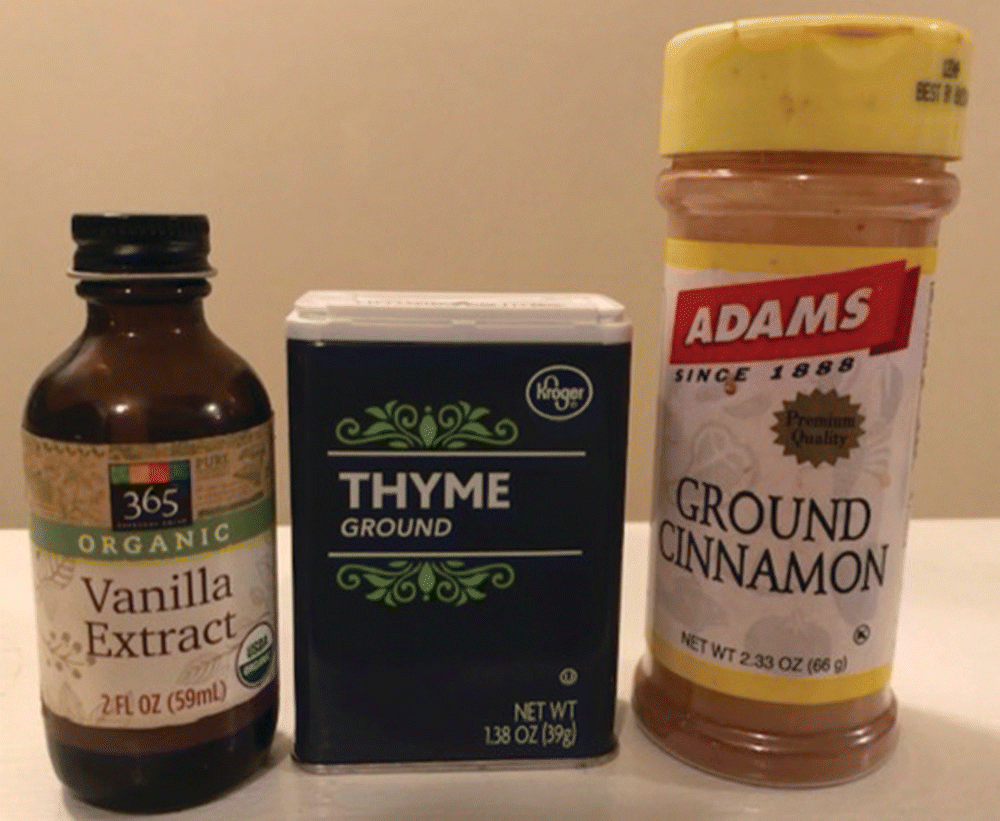Organic Chemistry: Concepts and Applications - Headley Allan D. 2020
Aromaticity and Aromatic Substitution Reactions
17.1 Introduction
Some compounds are often described as having distinct aromas or fragrances. For example, coffee is sometimes described as having a delightful aroma. The same is true for cherries, peaches and almonds; these compounds all have distinctive aromas or fragrances. One of the compounds that accounts for the sweet aroma of cherries and almonds is benzaldehyde. Another example is that cinnamaldehyde accounts for the distinctive fragrance of the flavoring, cinnamon; the same is true for vanillin, which is present in vanilla.
DID YOU KNOW?
The distinctive aromas and fragrances of various fruits and spices are typically due to the presence of aromatic compounds. Cinnamaldehyde accounts for the distinctive fragrance of the flavoring, cinnamon; vanillin is another aromatic compound found in vanilla, and thymol is found in thyme.

Benzene is another one of these organic compounds with a very distinctive aroma and is responsible for the odor of coal distillate. It was discovered that these organic compounds all have a special feature, which is described as aromaticity, and as result, these compounds are referred to as aromatic compounds. As you can imagine, there are numerous compounds that can be described as aromatic compounds. There are other aromatic compounds that may not have a distinct characteristic odor. Some include aspirin, morphine, norepinephrine, epinephrine, nicotine, vitamin E, and estrone. It is difficult to study all aromatic compounds individually, so we will carry out our study of aromatic compounds on the most common aromatic compound, benzene, and apply the knowledge gained to other compounds that are similar and aromatic.
Benzene was isolated from compressed illuminating gas in 1825 by Michael Faraday of the Royal Institution. In 1834, Eilhardt Mitscherlich of the University of Berlin synthesized benzene by heating benzoic acid with calcium oxide and he also showed that the molecular formula of benzene is C6H6. Today, benzene is obtained primarily from the distillation of petroleum, and it is used in the synthesis of many useful chemicals in our society. Benzene is also a very common solvent that is used in most chemical labs, both industrial and academic. However, it was removed from teaching labs, since it was shown to cause cancer when given to laboratory animals in very large dosage. Benzene is absorbed in the blood stream from inhalation and is converted to phenols and excreted by the liver. Benzene causes skin irritation; it is thought to cause leukemia. If absorbed in the blood, it will increase the number of white blood cells and it also causes damage to bone marrow. However, it is still sometimes used, under very controlled conditions, in industrial and research labs.
Since most of the chemical properties of compounds in this very large category of aromatic compounds are similar, we will study in detail the chemistry of only one of these compounds, benzene. By knowing the chemical and physical properties of benzene, we will be able to predict the properties of other aromatic compounds. In this chapter, we will first define aromaticity in a chemical sense and then apply that definition to other molecules to determine if they are aromatic or not. In the later sections of the chapter, we will examine the reactions of aromatic compounds.